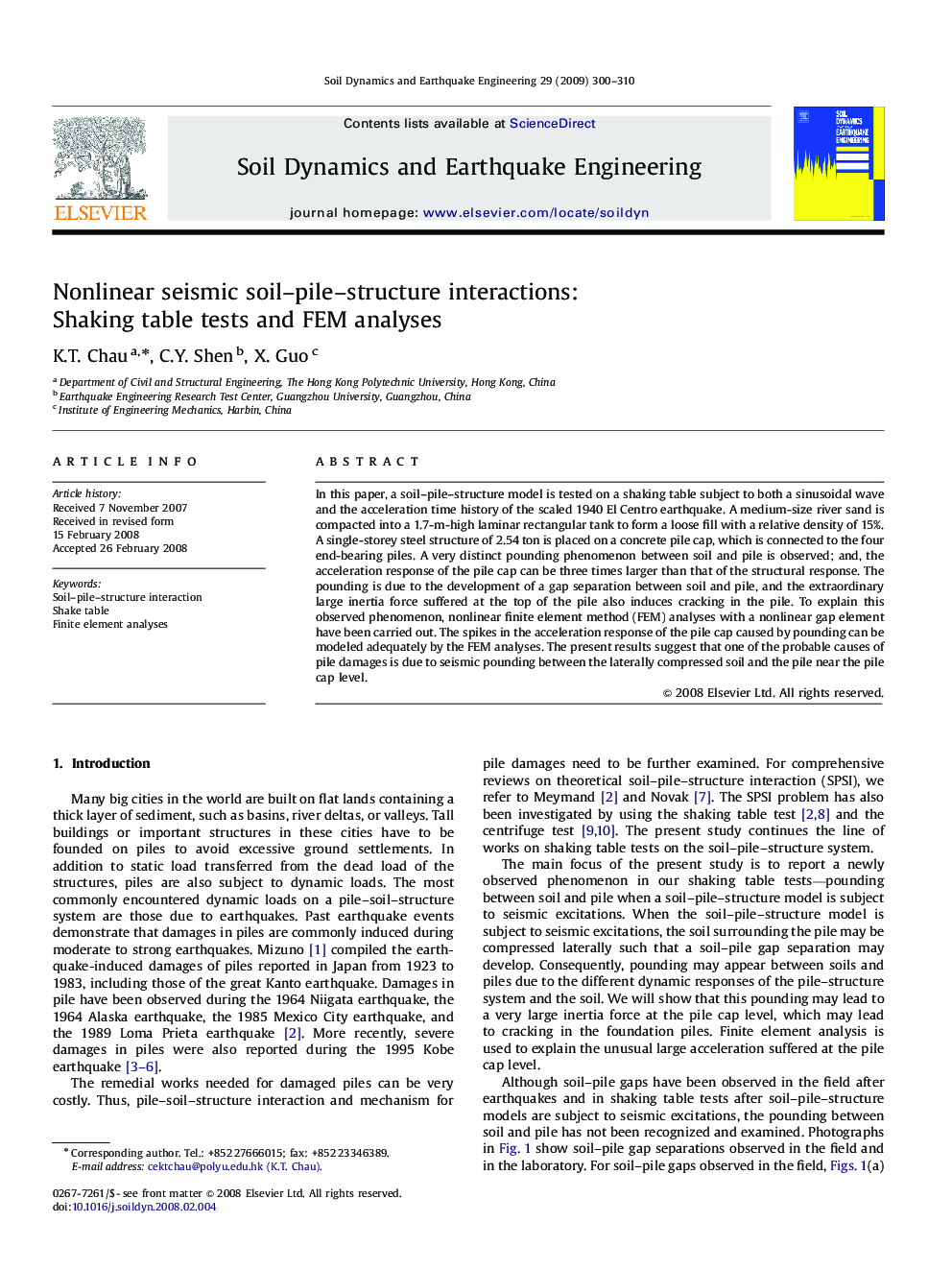| Article ID | Journal | Published Year | Pages | File Type |
|---|---|---|---|---|
| 305016 | Soil Dynamics and Earthquake Engineering | 2009 | 11 Pages |
In this paper, a soil–pile–structure model is tested on a shaking table subject to both a sinusoidal wave and the acceleration time history of the scaled 1940 El Centro earthquake. A medium-size river sand is compacted into a 1.7-m-high laminar rectangular tank to form a loose fill with a relative density of 15%. A single-storey steel structure of 2.54 ton is placed on a concrete pile cap, which is connected to the four end-bearing piles. A very distinct pounding phenomenon between soil and pile is observed; and, the acceleration response of the pile cap can be three times larger than that of the structural response. The pounding is due to the development of a gap separation between soil and pile, and the extraordinary large inertia force suffered at the top of the pile also induces cracking in the pile. To explain this observed phenomenon, nonlinear finite element method (FEM) analyses with a nonlinear gap element have been carried out. The spikes in the acceleration response of the pile cap caused by pounding can be modeled adequately by the FEM analyses. The present results suggest that one of the probable causes of pile damages is due to seismic pounding between the laterally compressed soil and the pile near the pile cap level.
